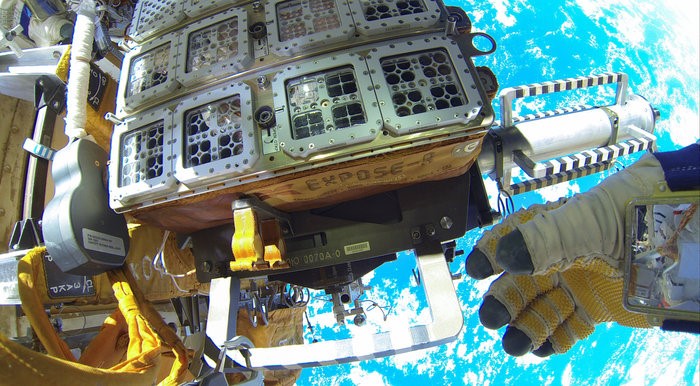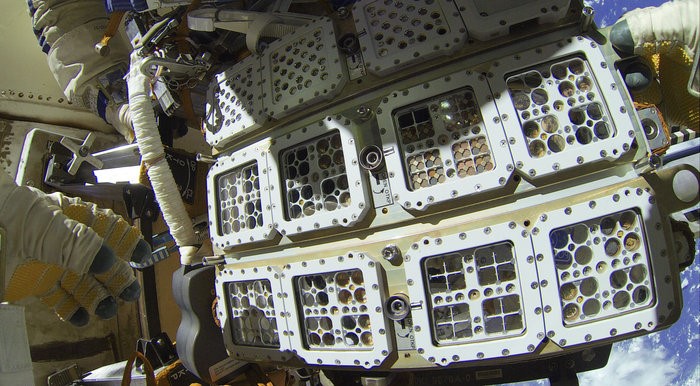
Much of what is known about terrestrial life’s exposure to cosmic radiation is due to experiments such as the European Space Agency’s Expose-R2, the device pictured above. The module, which is carrying a cargo of 46 species of bacteria, fungi, and arthropods, was attached to the Zvezda module of the International Space Station this past August, where it will comfortably sit for the next 18 months. And by comfortably, I mean being bolted to the outside of the ISS where it will have no protection against solar radiation and extreme temperatures.
The feature images were recently sent back by cosmonauts Alexander Skvortsov and Oleg Artemyev, who initially installed the device.
According to the ESA, the samples won’t exactly endure direct exposure to the void of space, whose background temperature is minus 455 degrees Fahrenheit. Instead, they will be placed in a unique position where their temperature can drop as low as –12°C, when the Station passes through Earth’s shadow, and rise to 40°C at other times, thus undergoing a similar process to the freeze-drying used to preserve foods. More importantly, samples in this position are susceptible to the full spectrum of the Sun’s radiation, a condition that’s very difficult to recreate on the ground where Earth’s atmosphere filters out the more harmful short wavelengths; this grants scientists an inside look into how the full blast of radiation is affecting chemicals in living organisms.

Not all the samples aboard Expose will experience massive discomfort. Some are placed into special compartments that retain minute amounts of pressure while also filtering some of the sunlight in an effort to recreate the Martian atmosphere. René Demets, ESA’s project scientist for Expose, explains: “The martian sections allow us to investigate to what extent terrestrial life can cope with the extreme conditions on the Red Planet. We hope they will contribute to the discussion about the possibility of life on Mars.”
The ESA resume’ of testing organism and organic chemicals in harsh environments is lengthy, and also includes a prior experiment that studied whether lichens and water bears (also known as tardigrade, not to be confused with the mammal) can survive spaceflight.
Source: ESA
Advertisement
Learn more about Electronic Products Magazine





